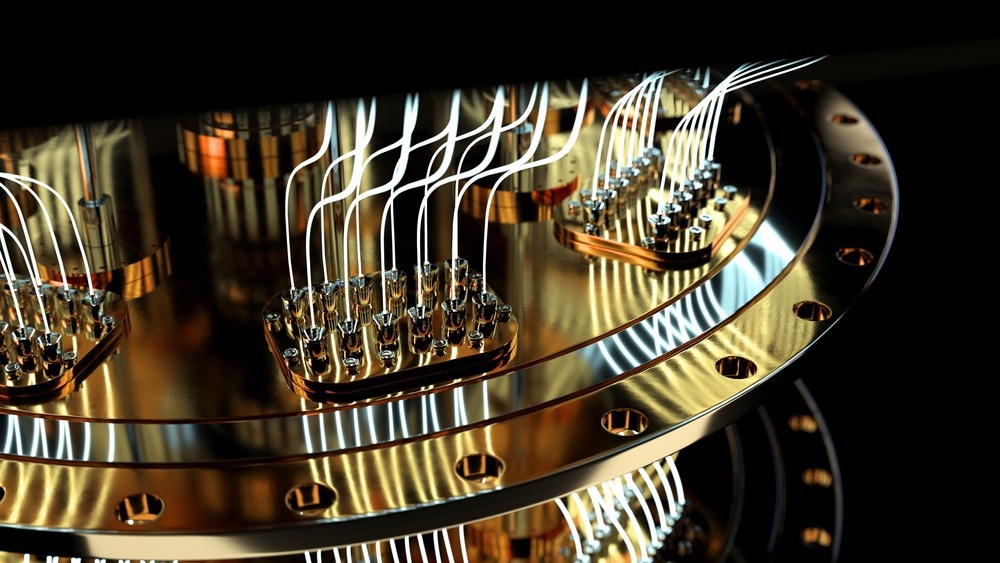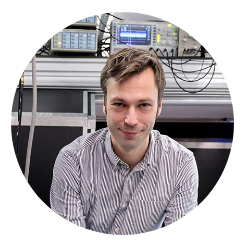In a new interview feature, AZoQuantum talks with Hannes Bernien from the Pritzker School of Molecular Engineering about his research focusing on noise-reduction in quantum computers utilizing 'spectator qubits'.
Please can you introduce yourself and your professional background?
My name is Hannes Bernien, and I am an assistant professor at the Pritzker School of Molecular Engineering at the University of Chicago. In my research group, we build large, well-controlled quantum processors from the bottom up by assembling them atom-by-atom. We then use these systems to both study fundamental quantum phenomena as well as for exploring new applications in quantum information processing.
What sets quantum computers apart from traditional systems?
A quantum computer uses quantum phenomena such as superposition and entanglement for new ways of processing information. In that sense, it works fundamentally differently from a classical computer. For certain problems, this can result in a huge speed-up in the computing time.
What are some of the difficulties of quantum computing that are hindering its implementation?
The fundamental building block of a quantum computer is a qubit, in analogy to the classical bit. Qubits can be in a superposition state and can also be part of an entangled state together with other qubits. However, these states are very fragile, and noise can lead to a loss of quantum information. This problem gets increasingly harder as you scale up the system and add more qubits. Therefore, the largest quantum processor sizes have been limited to around 100 qubits, whereas we might need thousands to possibly millions of qubits to tackle the most relevant problems where quantum computers would show the largest speed-up.
What is noise, and why is it such an issue for quantum computers?
Therefore, noise is basically the adversary of the quantum computer. For different quantum architectures, different noise sources are most relevant. These could be magnetic field noise from the environment, control noise from the microwave or laser fields that you apply to control your quantum computer or even cosmic rays that hit your quantum chip and destroy quantum information – just to name a few examples.

Image Credit: Bartlomiej K. Wroblewski/Shutterstock.com
Can you explain what spectator qubits are?
Spectator qubits are co-located in the quantum processor together with the data qubits that are used in the computation. The spectator qubits are not participating in the quantum computation itself, meaning they will not become entangled with the data qubits. Instead, they can be used to monitor noise that would affect the data qubits.
How do these differ from “regular” qubits?
In principle, you can use exactly the same qubit type for your data and for your spectator qubits. You basically just assign them different tasks, either data processing for the data qubits or noise monitoring for the spectator qubits. It can, however, be beneficial to use different qubit types for the two tasks in order to make it easier to control them independently. You do not want the two types to become entangled, and also you don’t want the control and the measurement of the spectator qubits to cause extra noise on the data qubits. Therefore, having two qubit types can be helpful.
In our case, these are two different species of atoms (rubidium and cesium) that have very different qubit frequencies, which allows us to control them independently.
Why would a quantum computer still need regular qubits alongside spectator qubits?
The spectator qubits do not participate in the quantum computation itself. This is the task of the data qubits. The spectator qubits are there to protect the data qubits from noise and therefore enable longer, more complex quantum computation.
How can spectator qubits help to monitor and reduce noise in a quantum computer?
Since the spectator qubits are co-located with the data qubits in the quantum processor, they can experience the same noise that the data qubits experience. So what you can do is perform a measurement on the spectator qubits to estimate what that noise is in real-time while a quantum computation is running on the data qubits. This noise measurement can then be used to adapt the rest of the computation on the data qubits in a way that corrects for the noise.
Therefore, quantum information can be stored longer in the data qubits since they are actively shielded from this noise. For this to work, the noise, the spectator, and the data qubit experience need to be correlated. This would, for instance, be the case for magnetic field noise that affects all the qubits or laser noise that applies to all of them. For uncorrelated noise, such as spontaneous decay of individual qubits, other quantum error correction protocols are needed. These can then work together with the spectator noise reduction protocol.
What was the research process like for your spectator qubits?
Implementing the spectator qubit protocol for the very first time was a truly exhilarating moment. What is really fascinating about it is that you interact with a large quantum system in real-time. The noise can change all the time, but through the fast measurements on the spectator qubits, we can adapt our quantum algorithm in real-time to react to that noise. Secondly, the spectator protocol is a great demonstration of the unique opportunities of our dual-species atomic processor architecture. The independent control of the two qubit types was crucial in achieving this result.
How successful have tests been thus far?
We have successfully shown that we can protect the data qubits from noise in situations where without the spectator qubit protocol, quantum information would have been completely lost. Right now, this is still limited to certain frequencies of noise, but we are confident that we can extend this to work across more broad frequency ranges.
What is next for this research?
We are now working on also implementing quantum error correction that can fix uncorrelated errors of the data qubits. After that, it would be very exciting to demonstrate that such protocols can work together with the spectator protocol.
More from The University of Chicago: New University of Chicago Podcast Promotes Quantum Research
About Hannes Bernien
 Hannes Bernien’s work focuses on finding answers to questions such as how to fully scale controlled quantum systems from the current few-particle level to many particles, how to study the effects of increased complexity in these systems, and how to utilize these phenomena for quantum technology such as quantum information processing. His lab combines techniques from quantum control and quantum optics with ultracold atoms and nanotechnology in order to develop new ways of engineering large, complex quantum systems and studying the phenomena that arise in such systems.
Hannes Bernien’s work focuses on finding answers to questions such as how to fully scale controlled quantum systems from the current few-particle level to many particles, how to study the effects of increased complexity in these systems, and how to utilize these phenomena for quantum technology such as quantum information processing. His lab combines techniques from quantum control and quantum optics with ultracold atoms and nanotechnology in order to develop new ways of engineering large, complex quantum systems and studying the phenomena that arise in such systems.
Bernien is a recipient of the 2020 International Quantum Technology Young Scientist Award, the 2021 Sloan Fellowship and the 2023 New Horizons Prize by the Breakthrough Foundation.
Disclaimer: The views expressed here are those of the interviewee and do not necessarily represent the views of AZoM.com Limited (T/A) AZoNetwork, the owner and operator of this website. This disclaimer forms part of the Terms and Conditions of use of this website.